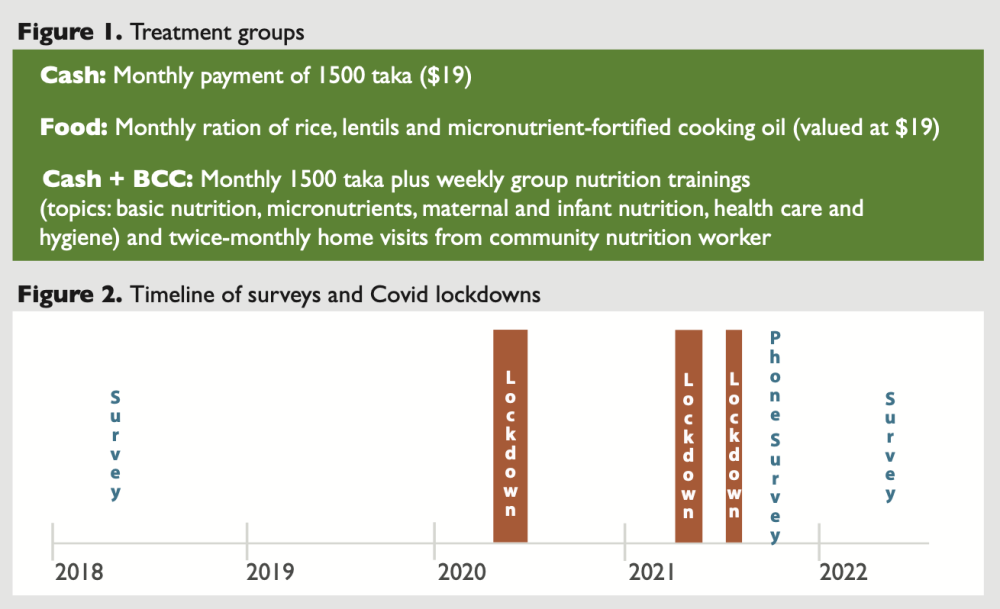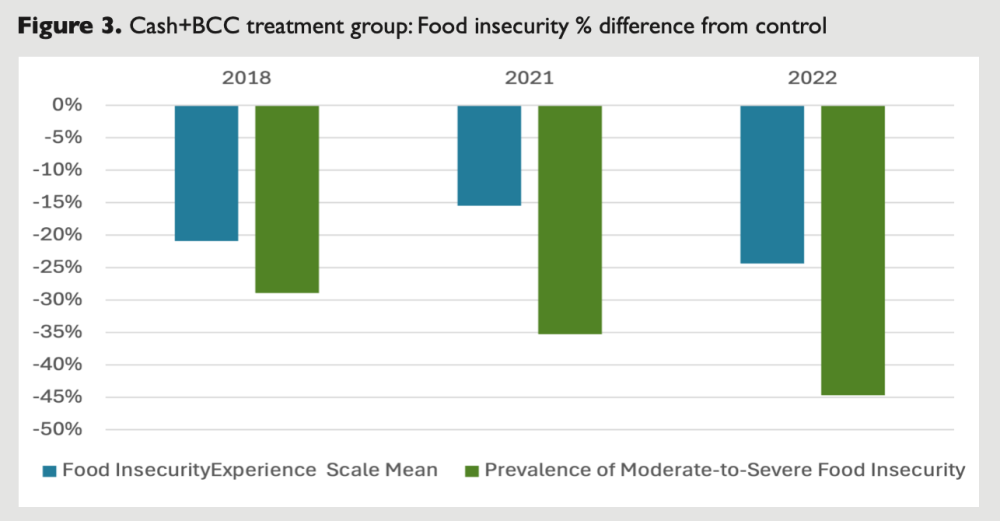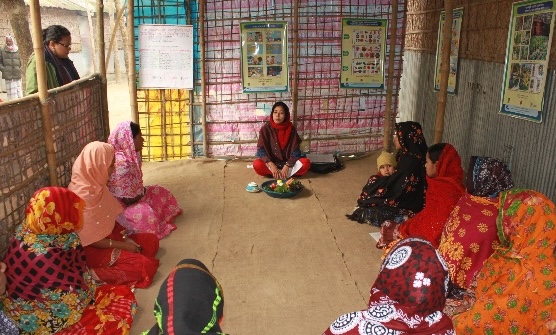Amid growing interest in whether social safety net transfer programs can build households’ resilience against future shocks, minimal evidence exists around impacts from interventions that occurred many years before the shock, and around what design features may carry high potential. The Transfer Modality Research Initiative sought to provide such evidence in Bangladesh. After eight years and the major economic shock posed by Covid lockdowns, the treatment group that received cash, nutrition trainings and home visits was less likely be food insecure. It appears that this treatment created conditions whereby households made self-directed investments in income-generating activities and self-provisioning of food.
Highlights
- Following a program that had treatment groups of Cash, Food, and Cash + Behavior Change Communication (BCC), only
the latter group demonstrated significant differences in food security four years after interventions ended. - This difference persisted through the economic shocks of three Covid lockdowns.
- Although livestock rearing was not specifically promoted by the program, Cash+BCC households were more likely to engage in this activity for income generation and self-provisioning of food.
From 2012 to 2014, the International Food Policy Research Institute (IFPRI) and the World Food Program (WFP) implemented the Transfer Modality Research Initiative (TMRI) in Bangladesh. Designed as a cluster randomized controlled trial to determine which safety net transfer modalities work best for the ultra-poor, TMRI targeted mothers of children under 2 years old. Among households in the trial, 76% were considered extremely poor, owning an average of .154 acres of land. Per capita consumption was under $1.9 per day and food comprised 64% of expenditures.
For this study, we focus on three treatment groups and their comparison to the control. Figure I describes what treatments each group received in the intervention.
To study the long-term effects of the program, we conducted surveys in 2018, 2021 and 2022 with 1,635 households that had participated in the program. Between the 2014 project end and the 2018 survey, Bangladesh experienced rapid economic growth. Then conditions worsened when the Covid-19 pandemic hit in early 2020. Over the next 1.5 years, Bangladesh had three lockdown periods, which severely constrained economic activity. Country-wide data indicates that the onset of pandemic restrictions was associated with a tripling of moderate-to-severe food insecurity among rural households from 15 to 45 percent. We conducted a phone survey shortly after the end of the third Covid lockdown in 2021. Then, we resumed in-person surveys in 2022, after economic activities had fully returned.

Persistent Food Security Impact
2018 survey results reflected rapid economic growth and showed sustained impacts from the intervention—but only among households that had participated in the treatment group that received Cash plus nutrition Behavior Change Communications (BCC) interventions, consisting of training and home visits. These households exhibited lower incidence of food insecurity throughout the survey period. In 2018, Cash+BCC households had a 21 percent lower score on the Food Insecurity Experience Scale than the control. This difference was 15 percent in 2021 and widened to 24 percent in 2022.
Cash+BCC households were much less likely to be moderately or severely food insecure. Four years after the intervention, 2018 incidence of moderate-to-severe food security was 29 percent lower than the control. As time went on and the Covid pandemic occurred, the difference grew to 35 percent in 2021 and then 45 percent in 2022. This trend indicates that the Cash+BCC intervention impact on food security not only persisted, but grew over time.

An Economic Mechanism
In determining why Cash+BCC households had much higher food security, we do not find evidence of differing health behaviors that reduced Covid incidence or deaths.
Rather, the evidence points to an economic mechanism. Specifically, Cash+BCC households are more likely to have a second income earner— specifically, a woman engaged in livestock activities.
Although the nutrition BCC did not specifically encourage livestock rearing, in combination with the cash it appears to have created the mindset and conditions that prompted households to invest in livestock. As a livelihood activity, livestock rearing is an approachable option, as it does not require much land, and the population generally has the necessary basic knowledge. In addition to generating income, raising livestock also allows households to self-provision some of their dietary intake; these households were less likely to report difficulty accessing food.
These results indicate that the design of social safety net programs is a critical determinant of their level and duration of impact. If designed and implemented well, such programs have the potential to enable long-term protective benefits and economic resilience, including amid shocks.


